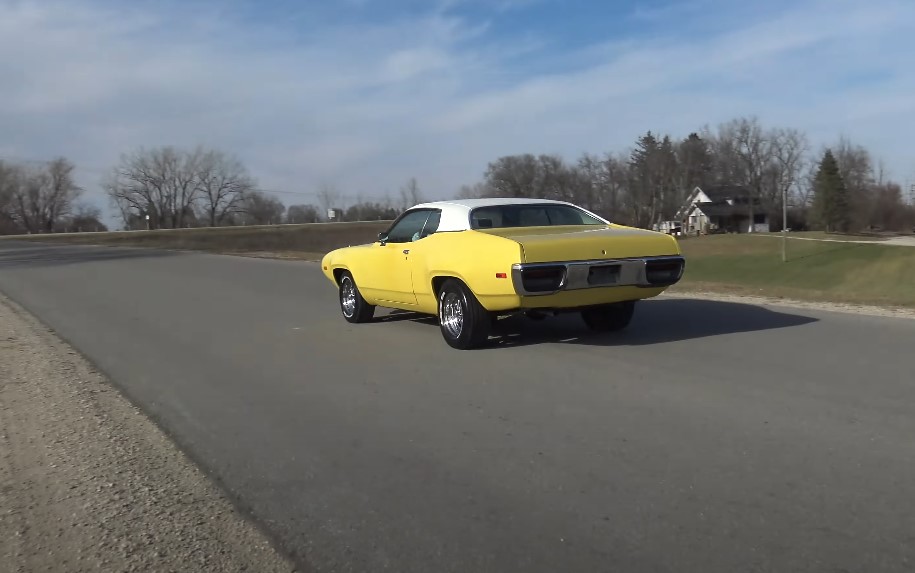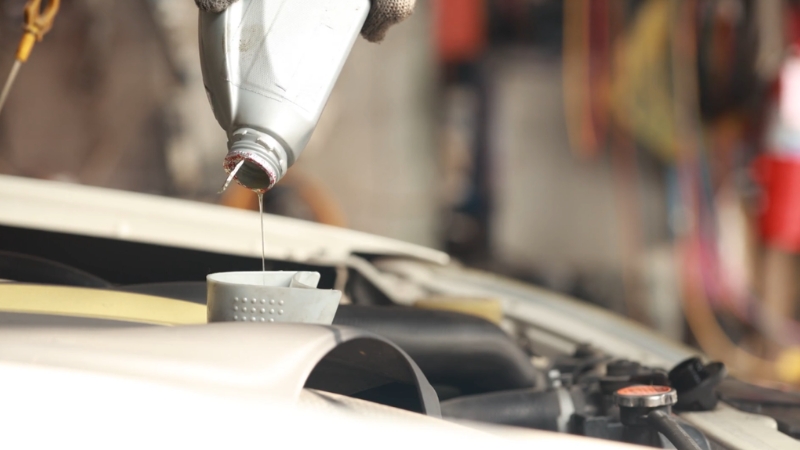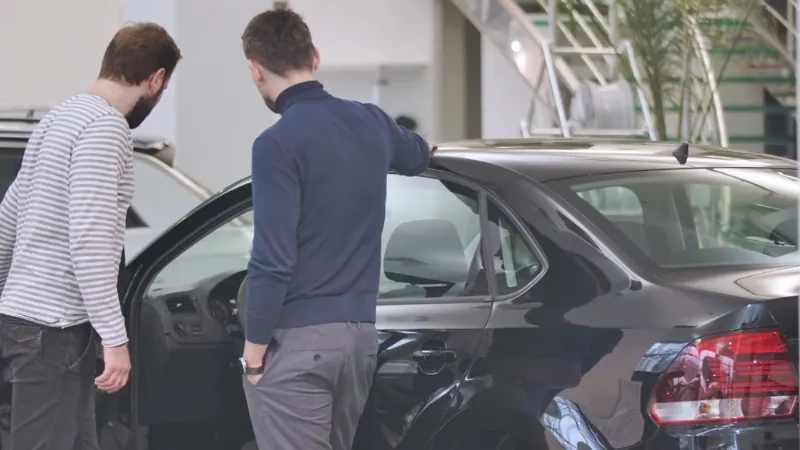
Share Post:
When thinking about American cars from the early ’70s, a few names come to mind. But one car, often forgotten by those who aren’t in the know, truly deserves the spotlight.
I’m talking about the 1972 Plymouth Satellite—a car that came out swinging, packing enough design flair and power to stand as one of the finest representations of the decade.
Lately, I’ve been thinking a lot about the classics that left a mark in the automotive industry, such as the 1948 Ford Truck, and Satellite is another iconic car that I thought really deserves attention.
It’s not just another car from the ’70s, but rather, a snapshot of a specific moment in American automotive history when style, power, and family practicality somehow merged into one, surprisingly sleek package. Here’s why it stood out:
- A classic that blends muscle car appeal with family practicality
- Still cherished by collectors and enthusiasts today
- A representation of the best of Plymouth’s design and engineering in the ’70s
Of course, that’s just scratching the surface, so let’s take a closer look at the importance of this ride and the mark it left in American history.
Table of Contents
ToggleA Glance at the Plymouth Satellite’s Origins
First off, it’s worth noting that Plymouth’s Satellite didn’t just appear out of thin air in 1972. This model had been making waves since 1965 when it debuted as the top trim of the Belvedere lineup.
Things evolved quickly, though. Muscle cars were the rage in the late ’60s, and Plymouth figured they could offer a car that wasn’t just a high-performance beast but also a comfortable ride for the average American family.
And they nailed it. By 1972, the Satellite had evolved through various redesigns, refining its blend of luxury and performance. You could get it in different trims like the base Satellite, the luxurious Sebring, and the sporty Sebring Plus.
But let’s not forget the Road Runner, the cousin that lived for speed, built off the same platform.
The Look That Stole the Show

Let’s talk aesthetics. If you’ve ever seen a 1972 Satellite cruising down the road (and if you haven’t, you’re missing out), you’ll know it’s a head-turner. The body style is all about curves and lines—sharp where it needs to be and smooth where it counts.
A broad, flat hood and an aggressive front grille scream power, while the gently sloping roofline on the coupe adds a sleek profile that was ahead of its time. The 1972 Satellite managed to nail that elusive sweet spot: flashy but not over the top.
Chrome accents were there, but Plymouth wasn’t trying to blind anyone with too much glitz. The coupe, in particular, was a fastback that just oozed style.
And let’s not even get started on the bold color choices and optional two-tone paint jobs. You could make your Satellite as subdued or as wild as you wanted.
Even inside, things were looking good for 1972. Plush seating, wood grain paneling, and an 8-track tape player (because what else would you listen to in the ’70s?) brought a touch of luxury.
Add leather upholstery into the mix, and you’ve got yourself a vehicle that’s not only a joy to look at but also one you’d happily drive across the country without feeling like you’ve been sitting on a rock for hours.
Design Highlights
- Bold front grille and broad hood for an imposing look
- Chrome accents sparingly used for a refined appearance
- Fastback coupe with sleek, contoured bodylines
- Stylish interior with wood paneling and plush seating
- Optional leather upholstery and air conditioning
What’s Under the Hood?

Now, you can’t talk about a car like the Satellite without getting into its performance, because that’s half the reason anyone cares about this car in the first place. So, let’s see what Plymouth was packing under that broad, flat hood.
You had options. Starting from a 225 cubic-inch slant-six engine—perfect for those more concerned with fuel economy (as much as anyone cared about that in 1972)—to the much beefier V8s.
The 318 cubic-inch V8 was the most popular choice, offering a nice balance between power and fuel efficiency. But if you had a bit more of a lead foot, you could go for the 340 or even the 400 cubic-inch V8.
For the performance junkies out there, let’s be real: the Road Runner, based on the Satellite platform, was the one to watch. With a monstrous 440 cubic-inch engine, this car wasn’t just fast—it was untamable on the streets.
If you wanted something that could throw you back in your seat and leave your neighbor’s Mustang in the dust, that was the engine to get.
Engine Options
- 225 cubic-inch slant-six for those who preferred reliable performance
- 318 cubic-inch V8, a solid middle-ground option
- 340 and 400 cubic-inch V8s for those who needed more horsepower
- The Road Runner’s 440 cubic-inch beast for street dominance
Check out this detailed brochure for more details.
The Interior
The interior of the 1972 Plymouth Satellite featured a blend of 1970s styling and comfort. It was known for its spacious cabin, with options ranging from basic vinyl seats to more upscale trims that included plush cloth and optional leather upholstery. Wood paneling accents on the dashboard added a touch of luxury, contributing to a more refined feel inside the car.
Depending on the trim level, the Satellite offered a variety of features, such as air conditioning and an AM/FM radio, which were considered premium options at the time. The seats were designed for comfort during long drives, and higher-end versions like the Sebring Plus had more premium materials and finishes. The Satellite was available in multiple body styles, including sedans, coupes, and wagons, which influenced the interior space and layout slightly across the models.
The interior colors were quite varied, with a palette that included both subtle earth tones and the more vibrant “High Impact” colors popular during that era. These were often matched with exterior paint choices, and customers could select two-tone vinyl tops or different grain patterns for added customization.
The Drive and Handling Is Surprisingly Smooth for Its Size

Now, if you’ve ever driven an old-school muscle car, you know that some of them feel like wrestling a wild animal. Not the Satellite. Despite its size and the power under the hood, it handled surprisingly well.
Sure, it wasn’t a sports car, but with a well-designed suspension, power steering, and optional power brakes, this car could cruise smoothly down the road.
Long road trips? Not a problem. City driving? Well, alright, maybe not ideal, but you could make it work.
Sure, by today’s standards, the 1972 Satellite doesn’t quite match up to what we’d call nimble. But for its time, this car offered a solid driving experience—one that didn’t punish you for wanting a bit of power with your daily driver.
The Satellite in Pop Culture
Let’s not forget that the Satellite, particularly in its Road Runner form, became something of an icon. With a name inspired by the Looney Tunes character, how could it not?
That car turned heads in movies, on TV shows, and in just about any context where a “cool guy” needed a car. The Road Runner was like a rebel with a heart of gold, capable of running wild but still maintaining a polished appearance.
The Satellite’s versatility made it a car that crossed multiple demographics: families, muscle car enthusiasts, even gearheads who just loved to tinker.
And because it showed up on-screen as the car of choice for characters with an adventurous streak, it became more than just a vehicle—it was a symbol.
Pop Culture Legacy
- Immortalized in its Road Runner form with the cartoon-inspired name
- Featured in movies and TV shows as the car for adventurous characters
- Loved by both families and muscle car fanatics
Changes in the 1972 Model Year
The early ’70s weren’t exactly kind to muscle cars. New emissions standards led to engines being detuned. The 1972 Satellite, like many others, suffered a bit of a drop in horsepower because of this. But it wasn’t all bad news.
Plymouth focused more on safety features, like adding front disc brakes, reinforced door beams, and three-point seat belts. So while you might not have been able to leave rubber on the pavement as easily, at least you weren’t risking as much doing it.
The Satellite still had plenty of power, though, so don’t get too caught up in the horsepower numbers. Plus, with its refined design, it wasn’t trying to be the loudest car on the block—it had grown beyond that phase.
Why the Satellite Still Matters Today

Over 50 years later, the 1972 Plymouth Satellite remains a gem of its era. Enthusiasts have kept this car alive, restoring it, maintaining it, and modifying it. Those Sebring and Sebring Plus variants? Still sought after. And for good reason.
The Satellite was a car that bridged the gap between muscle and luxury, and that kind of versatility is rare in the classic car world. If you see one at a car show, take a closer look.
Appreciate how it manages to blend bold style with practicality, power with comfort. It’s not the loudest or the most well-known muscle car from the ’70s, but it might just be the one that stands the test of time.
The Price of 1972 Plymouth Satellite
The price of a 1972 Plymouth Satellite can vary based on its condition, model variant, and any modifications. Here’s a general overview of current market prices:
- Base Models and Sedans: Lower-end models, such as the 2-door or 4-door sedans in good condition, can range from around $7,200 to $20,200 depending on their level of originality and condition.
- Sebring and Sebring Plus: These higher-trim models tend to fetch a higher price. Sebring Plus models in top condition can be valued between $22,400 and $35,700.
- Wagons: Station wagons, including the Regent variant, can be priced anywhere from $13,000 to $33,900, depending on originality and mileage.
On resale sites, prices for listed 1972 Plymouth Satellites can be found around $12,000 to $19,000 for good condition cars, and premium models or well-restored vehicles can go for as much as $25,000.
Summary
If you’re lucky enough to get behind the wheel of a 1972 Plymouth Satellite, enjoy the ride. There aren’t many cars from that era that could match its blend of style, performance, and comfort. And 50 years later, that’s saying something.








